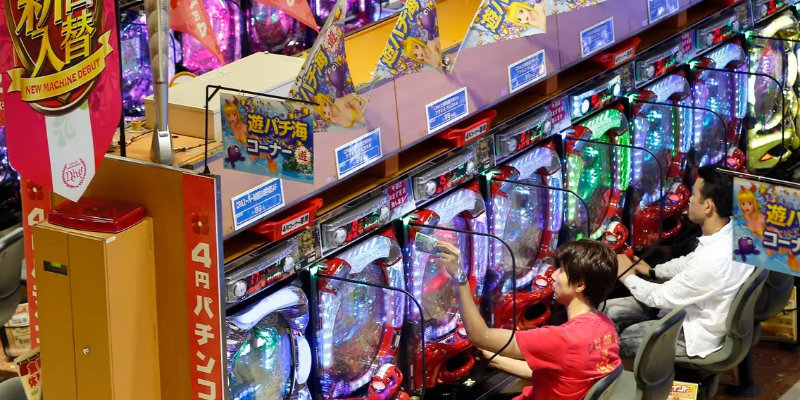What is pachinko and how do you play it?

The age-long question of pachinko machines is finally answered
We love talking about everything gambling related here at Slot Gods, and we've decided to talk about the legendary Pachinko machines. In the traditional sense of gambling, it would seem that it is banned within Japan and East Asia. It was officially outlawed in Japan in the early 20th century and has been a taboo topic ever since. From 1907, most of the casinos that popped up were unlicensed and connected to the Japanese Yakuza.
Which is why it’s even stranger that pachinko is incredibly popular in Japan despite the fact that gambling is ultimately illegal. In almost every city in Japan, you’ll notice a pachinko parlour as they have become ingrained with Japanese culture. So much so that tourists even visit Japan for the sole purpose of experiencing this phenomenon.
Definition of pachinko
Whilst pachinko is a name that is almost recognisable, not many know exactly what it is. The name basically comes from the sound that the machine makes. Essentially, a pachinko machine is like a pinball machine in which you launch balls up the side of the machine. It falls down into a playing field and hits things along the way which ultimately gains the player prizes.
Players traditionally want to have as many balls as possible in the catcher to earn them prizes as well. The parlour then pays the players in additional balls which they can use to play further games or to gain prizes.
The origins of pachinko
It can be traced back to the 1920s as a children’s game called the Corinth game and heavily inspired by the American Corinthian bagatelle. It became the pachinko we know today by the 1930s and spread throughout Japan. Due to the Second World War, it was halted until the late 1940s which saw a resurgence of players engage in the past time.
By 1948, the first commercial parlour was opened in Nagoya and the rest is history. It wasn’t until the 1980s that pachinko machines changed from mechanical devices with bells to the electric ones we know today.
What are pachinko parlours like?
Now, the parlours themselves are a huge mystery to many in the West. It’s well known that smoking is allowed in parlours despite the fact that Japan has a huge smoking ban in public areas.
Parlours can vary from huge casino type buildings to small neighbourhood ones and can hold thousands of slots. They are often lined up in a row and tend to use bright colours to draw players in. It’s definitely an sure way to get people to stop and look at the parlour in question. This combined with the loud music makes the experience of pachinko even more outrageous. You’ll never experience anything like being inside a pachinko parlour.
Amazingly, you can win just about everything apart from cash prizes. Electronics, cigarettes, cosmetics, alcohol and groceries are just a few things that you can win as prizes. The loophole to gain cash includes players going to “exchange points” which is often a shop next door that will exchange the prizes for cash.
How do you play pachinko?
It’s worth noting that you can’t get anywhere without renting any balls from the parlour. These will keep track of your score and will be your winnings. Don’t think you can try and bring your own in as almost all parlours have specific insignias engraved to make sure that people don’t cheat. Players often need a minimum of 250 pachinko balls in order to play the game, but many purchase more.
You launch the balls into the game in hopes of triggering a win or jackpot. The aim of the game is to capture as many balls as possible so that you can exchange the balls for bigger prizes.
The future of pachinko
There’s no denying that pachinko is part of Japanese history and is a huge part of why tourists visit. Just like people travel to Las Vegas for casinos, people go to pachinko parlours for a similar experience. Gambling for cash is still illegal in Japan, and pachinko parlours have managed to find a legal loophole.
It’s a fascinating past time that may be baffling to western audiences, but is a beloved staple within Japanese culture. In 2018, it was reported that pachinko machines made 30 times more cash than Las Vegas that year. Of course, Japan has an aging population and most pachinko players are typically older so the future is uncertain.
This added with the legal bill that allows casinos in 2018 could lead to a decline in pachinko players. Despite this, it’s highly unlikely that pachinko parlours will go extinct. They are clearly an integral part of Japanese culture and that’s something that casinos will never be able to replicate.
